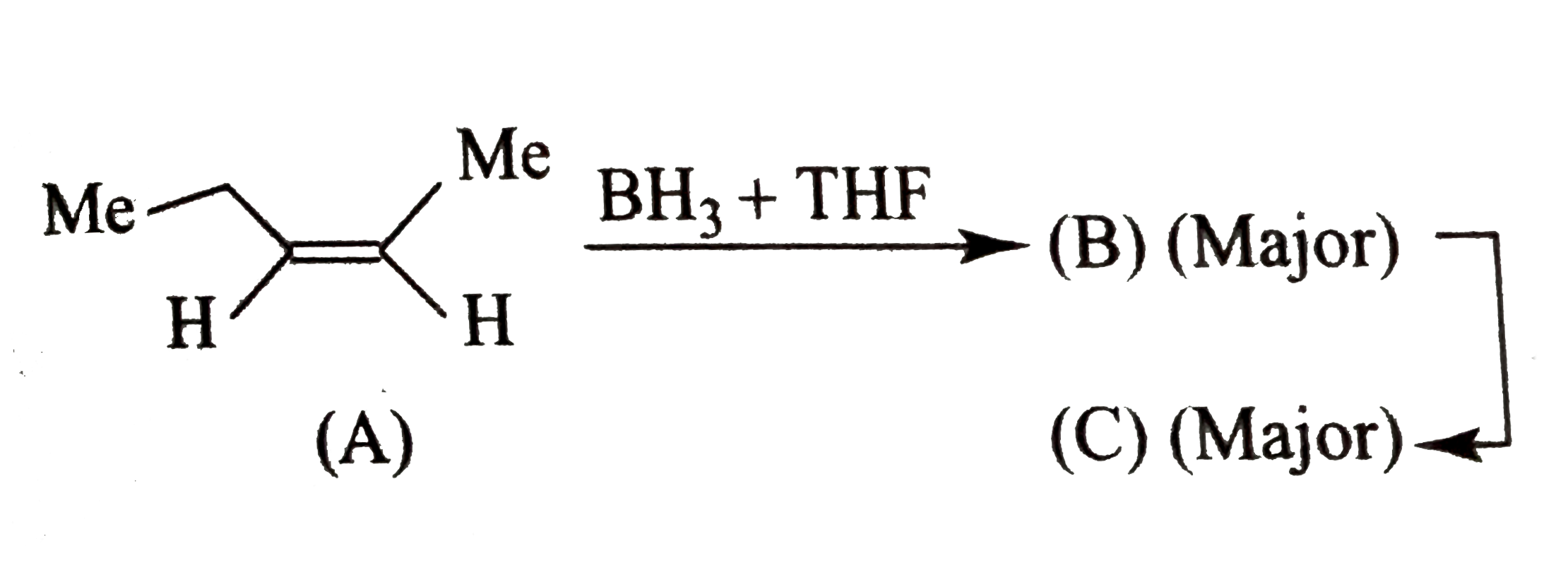Xe+F21:20−−→XH2O−−→YH2O−−→ZH2O−−→XeO3
Select correct option(s) for X, Y, Z and given chemical change:
X, Y and Z are in same oxidation state
All have equal number of lone pair on central atom
All are non-planar
All have equal number of covalent bonds
The correct Answer is:A, B, C, D
To solve the given question, we need to identify the compounds X, Y, and Z formed during the reactions involving xenon (Xe) and fluorine (F₂), and then analyze their properties based on the provided options.
1. Identify Compound X:
- The reaction begins with xenon reacting with fluorine in a 1:20 ratio.
- The product formed is xenon hexafluoride (XeF₆).
- X = XeF₆
2. Identify Compound Y:
- Next, XeF₆ reacts with water (H₂O).
- This reaction leads to the formation of xenon oxyfluoride (XeOF₄), which is a partial hydrolysis of XeF₆.
- Y = XeOF₄
3. Identify Compound Z:
- The compound Y (XeOF₄) then reacts with water again.
- This results in the formation of xenon difluoride oxide (XeO₂F₂).
- Z = XeO₂F₂
4. Final Product:
- The last reaction involves Z (XeO₂F₂) reacting with water.
- This leads to the formation of xenon trioxide (XeO₃).
- Final Product = XeO₃
5. Analyzing the Properties of X, Y, and Z:
- Oxidation State:
- For X (XeF₆), the oxidation state of Xe is +6.
- For Y (XeOF₄), the oxidation state of Xe is also +6.
- For Z (XeO₂F₂), the oxidation state remains +6.
- All three compounds (X, Y, Z) have the same oxidation state of +6.
- Lone Pairs:
- XeF₆ has one lone pair.
- XeOF₄ has one lone pair.
- XeO₂F₂ has one lone pair.
- Each compound has one lone pair on the central atom.
- Planarity:
- XeF₆ has a distorted octahedral structure (non-planar).
- XeOF₄ has a square pyramidal structure (non-planar).
- XeO₂F₂ has a seesaw shape (non-planar).
- All three compounds are non-planar.
- Covalent Bonds:
- Each of the compounds has six covalent bonds.
Conclusion:
Based on the analysis, we can conclude that:
- X = XeF₆
- Y = XeOF₄
- Z = XeO₂F₂
All the options provided are correct:
1. All three have the same oxidation state.
2. All have equal number of lone pairs on the central atom.
3. All are non-planar.
4. All have equal number of covalent bonds.
- The reaction begins with xenon reacting with fluorine in a 1:20 ratio.
- The product formed is xenon hexafluoride (XeF₆).
- X = XeF₆
- Next, XeF₆ reacts with water (H₂O).
- This reaction leads to the formation of xenon oxyfluoride (XeOF₄), which is a partial hydrolysis of XeF₆.
- Y = XeOF₄
- The compound Y (XeOF₄) then reacts with water again.
- This results in the formation of xenon difluoride oxide (XeO₂F₂).
- Z = XeO₂F₂
- The last reaction involves Z (XeO₂F₂) reacting with water.
- This leads to the formation of xenon trioxide (XeO₃).
- Final Product = XeO₃
- Oxidation State:
- For X (XeF₆), the oxidation state of Xe is +6.
- For Y (XeOF₄), the oxidation state of Xe is also +6.
- For Z (XeO₂F₂), the oxidation state remains +6.
- All three compounds (X, Y, Z) have the same oxidation state of +6.
- Lone Pairs:
- XeF₆ has one lone pair.
- XeOF₄ has one lone pair.
- XeO₂F₂ has one lone pair.
- Each compound has one lone pair on the central atom.
- Planarity:
- XeF₆ has a distorted octahedral structure (non-planar).
- XeOF₄ has a square pyramidal structure (non-planar).
- XeO₂F₂ has a seesaw shape (non-planar).
- All three compounds are non-planar.
- Covalent Bonds:
- Each of the compounds has six covalent bonds.
Based on the analysis, we can conclude that:
- X = XeF₆
- Y = XeOF₄
- Z = XeO₂F₂
1. All three have the same oxidation state.
2. All have equal number of lone pairs on the central atom.
3. All are non-planar.
4. All have equal number of covalent bonds.
Topper's Solved these Questions
- TYPES OF REACTIONSBook:VK JAISWAL ENGLISHChapter:TYPES OF REACTIONSExercise:MATCH THE COLUMN
Explore 14 Videos
- TYPES OF REACTIONSBook:VK JAISWAL ENGLISHChapter:TYPES OF REACTIONSExercise:SUBJECTIVE PROBLEMS
Explore 42 Videos
- TYPES OF REACTIONSBook:VK JAISWAL ENGLISHChapter:TYPES OF REACTIONSExercise:LEVEL 3
Explore 44 Videos
- s-BLOCK ELEMENTSBook:VK JAISWAL ENGLISHChapter:s-BLOCK ELEMENTSExercise:SUBJECTIVE PROBLEMS
Explore 2 Videos
Similar Questions
Knowledge Check
SiCl4H2O−−→XHeat−−→YNaOH−−−→Z
find X,Y,Z.ASiO2SiNaSiBSi(OH)4SiO2Na2SiO3CSi(OH)4SiSiO2DSiO2SiCI4Na2SiO3
 H2O2+ΘOH
H2O2+ΘOH
B and C are:
View SolutionH2O2R.T.−−→H2O+12O2
View SolutionH2O2R.T.−−→H2O+12O2
View SolutionFeCr2O4+Na2CO3+O2Fusion−−−→[X]H+−−−−−→H2O[Y]H2O/H+−−−−−→[Z]
Which of the following statement is true for the compounds [X], [Y] and [Z]?
View SolutionC3H5N(α)Hydrolysis−−−−−→CH3H6O2(x)(i)Cl2/Pred−−−−−−−→(ii)H3O+C3H5O2Cl(y)NH3−−→C3H7O2(z)
correct option (s) is/are for the above reaction.
View SolutionC6H10NBS−−→(X)Mgether−−−−→(Y)CH3CN−−−−→H3O+(Z)
The compound (Z) is
View SolutionIdentify the final product CH2=CH2Cl2/H2O−−−−−→X−aq.KOH−−−−−−→Y
View Solution